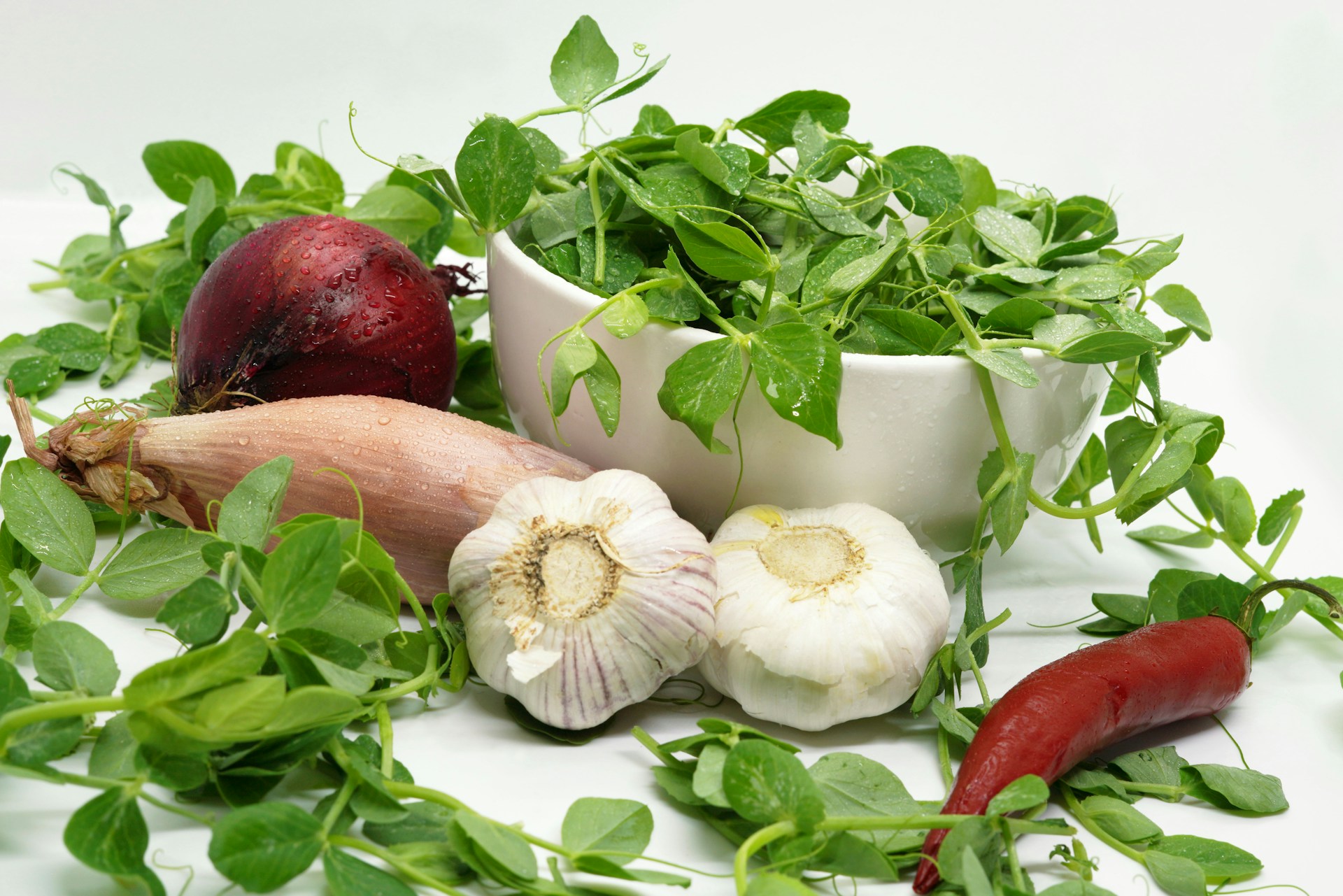In the world of gut health, two terms frequently come up: prebiotics and probiotics. While they sound similar, they play distinct yet complementary roles in supporting a balanced, thriving gut ecosystem. Understanding these differences can help you choose the right foods and supplements to nourish your body from the inside out.
What Are Probiotics?
Probiotics are living microorganisms—primarily strains of beneficial bacteria—that reside in your gut. These “good” microbes help maintain a healthy balance, aiding digestion, synthesizing certain vitamins, and keeping harmful bacteria in check. A diverse population of probiotics in the gut is linked to improved digestion, stronger immune function, and possibly even better mood and cognitive health.
Common Sources of Probiotics:
- Fermented Dairy: Yogurt, kefir, and certain aged cheeses contain live cultures that replenish beneficial bacteria.
- Fermented Vegetables: Sauerkraut, kimchi, and pickles made through natural fermentation are teeming with good bugs.
- Fermented Soy Products: Tempeh and miso introduce friendly bacteria into your gut.
- Supplements: Probiotic supplements offer concentrated doses of beneficial strains, making them convenient for those with specific health needs or dietary restrictions.
What Are Prebiotics?
Unlike probiotics, prebiotics aren’t living organisms. Instead, they’re a type of dietary fiber that your body can’t fully digest. However, this tough-to-break-down fiber isn’t wasted. It travels to the large intestine, where it serves as “food” for the beneficial bacteria already present. By feeding these microbes, prebiotics help good bacteria thrive, strengthen the gut’s protective barrier, and promote the production of health-supporting compounds like short-chain fatty acids (SCFAs).
Common Sources of Prebiotics:
- High-Fiber Vegetables: Onions, garlic, leeks, and asparagus are all prebiotic powerhouses.
- Fruits and Whole Grains: Apples, bananas, oats, barley, and wheat bran contribute to a fiber-rich environment that feeds gut bacteria.
- Root Vegetables and Legumes: Jerusalem artichokes, chicory root, and lentils provide the fiber that beneficial bacteria love.
- Supplements: Prebiotic supplements often come in the form of powders or pills, making it easy to increase your intake if your diet falls short.
Why the Difference Matters
While probiotics add beneficial bacteria to your gut, prebiotics help ensure that these helpful microbes have the nourishment they need to flourish. Think of your gut as a garden: probiotics are like planting seeds of good bacteria, and prebiotics are the fertilizer that helps those seeds grow strong and abundant.
Without adequate prebiotics, the beneficial bacteria in your gut may struggle to establish themselves or get crowded out by less helpful strains. Conversely, if you consume plenty of prebiotics but lack a robust population of probiotics, you’re essentially providing fertilizer with no plants to feed. For the best results, you need both working in harmony.
Tips for Combining Prebiotics and Probiotics
- Diversify Your Diet:
- Aim for a variety of plant-based, fiber-rich foods to get ample prebiotics.
- Include fermented foods like yogurt or kimchi for natural probiotic sources.
- Start Slowly:
- Increasing fiber intake too quickly can cause bloating or discomfort. Gradually add more prebiotic-rich foods to help your gut adapt.
- Consider Supplements:
- If you struggle to find good sources in your diet or have specific gut health concerns, supplements can help.
- Consult a healthcare professional for personalized recommendations.
- Balance and Consistency:
- Regularly eating both prebiotic and probiotic foods helps maintain a stable, supportive gut environment.
- Consistency is key: small, daily choices add up over time.
By understanding the unique roles of prebiotics and probiotics, you can make smarter decisions about what to eat and when to supplement. Combining both in your diet supports a healthier, more resilient gut—one that can boost digestion, bolster immunity, and contribute to your overall well-being.
